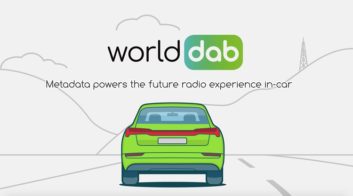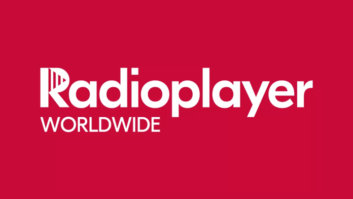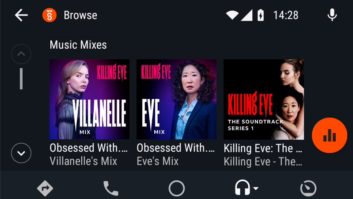
The author of this commentary is chair of the WorldDAB UX Group and director, Radioplayer Automotive Partnerships.
At WorldDAB we recently launched a targeted communications campaign, urging radio broadcasters to prioritize the provision of great-looking images and informative text (metadata) for car dashboards.
The campaign includes a video explainer for senior execs, plus FAQs and a factsheet for those wanting to find out more. There’s also a dedicated email address through which broadcasters can ask WorldDAB to point them in the direction of organizations who can help. Information is available here.
For many reading this, the campaign and messaging to broadcasters might seem blindingly obvious. Why wouldn’t you do everything to ensure your station and branding looks great in cars?
Depending on which country you’re in, consumption in cars could account for anything from 25% to 50% of all listening.
But not everyone will have the same understanding of what needs to be done, or the time and resource to prioritize it. This is where WorldDAB and its member network can help.
We need to set this campaign against the backdrop of the pandemic, with the accompanying economic downturn, which has hit everyone hard.
We understand why metadata might not make it to the top of everyone’s to-do list right now, so how do we make progress in this critical area?
The answer to that conundrum comes in the answers to two questions: Why act now? And what do you actually need to do?
Why Act Now?
Because dashboard technology is changing faster than ever before. We need to react to the new dashboard environment and work hard to create a great radio experience as the competition for ears and eyes in the car increases.
Technologies that allow pairing of smartphones to the dashboard (like Apple CarPlay and Android Auto) have already opened up a wider choice of media sources, but now we have an app ecosystem available directly in the dashboard for the first time, thanks to the new Android Automotive operating system, launched in the Polestar 2 earlier this year.
Media and audio apps can now be downloaded directly to car dashboards via embedded SIM cards in the car. The increased number of services is forcing a rethink from car manufacturers about the user journey and interface, including the radio button.
It is vital that we continue to push for radio’s prominence on the dashboard given its popularity in-car and clear value to consumers. Many car manufacturers still provide a radio button, but a study from the National Association of Broadcasters of 50 cars at U.S. automotive exhibitions showed that the number of cars with a specific button on the dash for radio had decreased from 39% in 2017 to 26% in 2019.
This is not down to car manufacturers downgrading radio, but rather with more media services available on their interface they need to create a “user journey” that makes sense. At the same time, color touchscreens are replacing physical buttons, and these screens are getting bigger, brighter and sharper, making the visual experience of radio more important than ever.
[Related: “Metadata Is Both Glue and Lubrication,” Q&A with NPR’s David Julian Gray]
While this presents a challenge, there is also a big opportunity here for the radio industry, and we need to deliver if we’re to keep our car manufacturer partners supporting radio.
The good news is that they are more engaged than ever before. They want radio to look great in their cars, but this means they are disappointed and frustrated when it does not.
The same will be true of consumers who will compare radio to other app experiences, rightly expecting radio to look as good, if not better. So we must act now.
Within the WorldDAB Automotive Group (a collaboration of broadcasters, vehicle manufacturers, Tier 1s and companies offering solutions for radio to the vehicle industry), we believe that we must focus on the “user experience.”
If the radio UX is fantastic, and the content is great, our listeners will stay engaged. Of course within WorldDAB we see the heart of that UX being DAB+ (HD radio in the U.S.), alongside FM and streaming in a hybrid radio. We believe that digital broadcast radio is vital for robust, quality, free-to-air access. The question then is, when the station is playing, what appears on the large color screen that brings it to life?
The answer is metadata.
As a minimum, broadcasters should be providing a high-resolution station logo, the station name and description.
It’s likely that listeners will also want to know what show they’re listening to, the song that’s playing and who it’s by, they may also want an image of the artist. This is metadata, and without it radio risks appearing as a blank screen, disappointing listeners, car manufacturers and missing the chance to promote one’s station and brand.
[Read more Radio World articles about metadata.]
The work we do now to prioritize metadata for the car will also establish a baseline experience on which we can build with our car manufacturer partners.
Screens will get bigger and entertainment even more important, as drivers become passengers in autonomous cars.
For example, could there be an option in the future to show live video from the studio when hands are off the wheel? This isn’t going to happen any time soon but collaborating now with car manufacturers on a roadmap for metadata will allow us to plan to introduce more exciting features in the future and keep the radio UX strong.
So, What Do We Actually Need to Do?
Well, if you’re a radio exec, there are some simple steps you can take.
First, make someone responsible for getting your metadata to the car. It’s likely that your station will have already created all the metadata you need for use on your station apps or web players, so no problems there.
You will then need to see if you can make this metadata available over the air on DAB+, and you can also work with an organization who can help get your metadata to car manufacturers over the internet.
WorldDAB can put you in touch with member organizations who can help. Just email [email protected].
Additional resources are available at WorldDAB. They include an animated video that explains why it’s important for stations to have a visual presence; an information Sheet aimed at radio managers and those working at a technical level; and a video presentation to promote the use of metadata within the broadcasting industry. That video is below:











